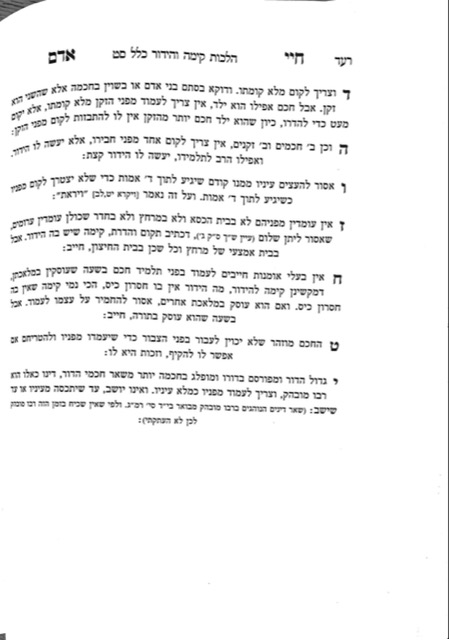We are discussing the halachos of kavod talmidei chachamim. If a person is in a situation where people are being mevazeh talmidei chachamim, they have a chiyuv macha’ah, to protest against the bizayon. The Gemara says that one who is mevazeh a talmid chacham is put into cherem, and one who is present when others are mevazeh a talmid chacham and does not protest is put into cherem as well. There is discussion as to whether we actually put people into cherem nowadays, or whether the cherem is automatic, but regardless, we see that there is a chiyuv macha’ah when the reputation or kavod of a talmid chacham is impugned
We find that there are concepts of macha’ah and tochacha, and we need to clarify the difference. Tochachah is the concept of rebuking someone for the constructive purpose of trying to help them improve. It is primarily for the sake of the wrongdoer. Macha’ah applies even if one doesn’t think they will be effective, and even if the wrongdoer will go elsewhere and continue their bizayon, as the chiyuv macha’ah is on the individual who hears the bizayon to protest the wrongdoing.
The Chofetz Chaim quotes Rabbeinu Yonah (Shaarei Teshuva) who explains there are two reasons for the chiyuv macha’ah. The first is the chiyuv to stand up for the kavod of the talmid chacham, in the same way one would stand up for their parents if someone was being mevazeh them. The second is that one’s silence could be construed as agreement to what is said. In order to avoid the misunderstanding that one’s silence is agreement, one has a chiyuv to respond. Both of these reasons are for the purpose of the individual hearing the bizayon, rather than for the wrongdoer.
Rabbeinu Yonah continues, and points out that the way of the chachamim is to notice positive things, while the way of reshaim is to notice the negative. The rasha looks at the world with a general negativity, not realizing the beauty of Hashem’s world nor the potential of people.
We have completed the halachos of kavod talmidei chachamim. The next section of the Chayei Adam begins hilchos shabbos, but we will go back to cover the halachos of tzo’ah and ervah which we skipped when we began the Chayei Adam.
The target date for beginning hilchos shabbos is 3 Kislev/November 27. We are looking to expand our listenership for hilchos shabbos, so please share the shiur with anyone who may benefit from it!
Summary
There is a chiyuv macha’ah when one hears the bizayon of a talmid chacham. The chiyuv macha’ah is to protest regardless of whether the wrongdoer will stop, as macha’ah is primarily for the one listening to the bizayon, rather than for the wrongdoer.
Macha’ah is to protect the kavod of the one who is being maligned and to prevent the mistaken understanding that he agrees with the maligners.



